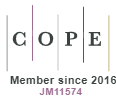Establishing the normative and comparative needs of assistive technology provision in Queensland from the agency and funding scheme perspective
Christy Hogan A , Louise Gustafsson A B A * , Amelia Di Tommaso A B , Tenelle Hodson
A B A * , Amelia Di Tommaso A B , Tenelle Hodson  A B , Michelle Bissett B C and Camila Shirota A
A B , Michelle Bissett B C and Camila Shirota A
A
B School of Health Sciences and Social Work,
C Faculty of Health,
Abstract
Assistive technology services and devices support the participation and inclusion of people living with disability. In Australia, the regulatory bodies, agencies and schemes that manage assistive technology provision are governed by national and / or state-based Acts and Legislation. This study examined the assistive technology sector from the perspective of the regulatory bodies, agencies and schemes.
Regulatory bodies, agencies and schemes that manage funding for assistive technology in Australia were identified by the research team. A website audit reviewed publicly available documents and information. Semi-structured interviews with representatives from the agencies and schemes were audio-recorded and transcribed verbatim.
The audit (n =17) found that the range and level of information publicly available was variable. The availability of assistive technology for driving and transport, design and building for access and safety, and mobility was most often promoted. The qualitative findings (n = 11) indicated variability and challenges within four themes: operationalising the legislation; internal assistive technology processes; reasonable and necessary; and risks in the assistive technology pathway.
Regulatory bodies, agencies and schemes are critical to the effectiveness of the sector. The findings identified opportunities for the organisations to review how internal processes are communicated publicly, and for the sector to address the perceived risks related to health professional availability, knowledge and skills, and limited accessibility to trial assistive technology. Subsequent studies explored the perspectives of the assistive technology advisors and suppliers and the recipients of assistive technology services and devices.
Keywords: Assistive products, disability, funding, qualitative, audit.
References
Australian Institute of Health and Welfare (2022). Rural and remote health. Retrieved on 3 August, 2022 from. Retrieved from https://www.aihw.gov.au/reports/rural-remote-australians/rural-and-remote-health.
Bradshaw, J. (1974) The concept of social need. Ekistics-the Problems and Science of Human Settlements 37(220), 184-187 https://www-jstor-org.libraryproxy.griffith.edu.au/stable/43618288#metadata_info_tab_contents.
| Google Scholar |
Cook, A. M., Polgar, J. M., & Encarnação, P. (2020). Technologies that assist people who have disabilities, In Assistive technologies: principles and practice (5th ed., pp. 16–30), Retrieved Feruary 5, 2023, from https://www.sciencedirect.com/science/book/9780323523387
Desmond, D., Layton, N., Bentley, J., Boot, F. H., Borg, J., Dhungana, B. M., Scherer, M. J. (2018) Assistive technology and people: A position paper from the first global research, innovation and education on assistive technology (GREAT) summit. Disability and Rehabilitation: Assistive Technology 13(5), 437-444.
| Crossref | Google Scholar |
de Witte, L., Steel, E., Gupta, S., Delgado Ramos, V., Roentgen, U. (2018) Assistive technology provision: towards an international framework for assuring availability and accessibility of affordable high-quality assistive technology. Disability and Rehabilitation: Assistive Technology 13(5), 467-472.
| Crossref | Google Scholar |
Hammel, J., Angelo, J. (1996) Technology competencies for occupational therapy practitioners. Assistive Technology 8(1), 34-42.
| Crossref | Google Scholar |
Hsieh, H.-F., Shannon, S. E. (2005) Three approaches to qualitative content analysis. Qualitative Health Research 15(9), 1277-1288.
| Crossref | Google Scholar |
Insurance and Care NSW (2022). About us: Welcome to iCare. Retrieved from https://www.icare.nsw.gov.au/about-us#gref.
Layton, N. (2015) Problems, policies and politics: making the case for better assistive technology provision in Australia. Disability and Rehabilitation: Assistive Technology 10(3), 240-244.
| Crossref | Google Scholar |
McMullan, M. (2006) Patients using the internet to obtain health information: how this affects the patient-health professional relationship. Patient Education and Counselling 63(1-2), 24-28.
| Crossref | Google Scholar |
National Disability Insurance Agency [NDIA] (2021). History of the NDIS. Retrieved from https://www.ndis.gov.au/about-us/history-ndis#:∼:text=In%20March%202013%20the%20NDIS,on%201%20July%202015)%3B
National Injury Insurance Agency Queensland (2022). About the scheme. Retrieved from https://niis.qld.gov.au/about-the-scheme/
National People with Disabilities and Carers Council (2009). Shut out: the experience of people with disabilities and their families in Australia [National disability strategy consultation report], Commonwealth of Australia. https://www.dss.gov.au/our-responsibilities/disability-and-carers/publications-articles/policy-research/shut-out-the-experience-of-people-with-disabilities-and-their-families-in-australia
Neumann, P. J., Chambers, J. D. (2012) Medicare’s enduring struggle to define “reasonable and necessary” care. The New England Journal of Medicine 367(19), 1775-1777 https://www.nejm.org/doi/full/10.1056/nejmp1208386.
| Google Scholar |
Padmanabhan, M. (2021) Fraud and abuse: “Reasonable and necessary” gets redefined. For the Record 33(3), 8-9 https://www.fortherecordmag.com/archives/MJ21p8.shtml.
| Google Scholar |
Pearson, C., Ridley, J. (2017) Is personalization the right plan at the wrong time? Re-thinking cash-for-care in an age of austerity. Social Policy & Administration 51(7), 1042-1059.
| Crossref | Google Scholar |
Ranada, å.L., Lidström, H. (2019) Satisfaction with assistive technology device in relation to the service delivery process – a systematic review. Assistive Technology 31(2), 82-97.
| Crossref | Google Scholar |
Scherer, M. J. (2002) The change in emphasis from people to person: introduction to the special issue on assistive technology. Disability and Rehabilitation 24(1-3), 1-4.
| Crossref | Google Scholar |
Steel, E. J. (2019) The duplicity of choice and empowerment: disability rights diluted in Australia’s policies on assistive technology. Societies 9(2), 39-50.
| Crossref | Google Scholar |
Steel, E. J. (2020) Content analysis to locate assistive technology in Queensland’s motor injury insurance rehabilitation legislation and guidelines. Assistive Technology 32(2), 74-78.
| Crossref | Google Scholar |
Steel, E. J., Buchanan, R., Layron, N., Wilson, E. (2017) Currency and competence of occupational therapists and consumers with rapidly changing technology. Occupational Therapy International [Article ID 5612843] 1-5.
| Crossref | Google Scholar |
Summers, M., & Walker, L. (2013). National credentialing and accreditation for assistive technology practitioners and suppliers [an options paper], In Assistive Technology Suppliers Australasia and Australian Rehabilitation and Assistive Teechnology Association. https://www.arata.org.au/education-resources/publications/
Waldron, D., Layton, N. (2008) Hard and soft assistive technologies: defining roles for clinicians. Australian Occupational Therapy Journal 55(1), 61-64.
| Crossref | Google Scholar |
World Health Organization [WHO] (2018). Assisitive technology, World Health Organization, Retrieved December 15, 2021 from. Retrieved from https://www.who.int/news-room/fact-sheets/detail/assistive-technology


